-
 bitcoin
bitcoin $112195.049338 USD
2.42% -
 ethereum
ethereum $4124.915858 USD
2.81% -
 tether
tether $1.000570 USD
0.02% -
 xrp
xrp $2.861568 USD
2.25% -
 bnb
bnb $1000.346670 USD
3.04% -
 solana
solana $209.070819 USD
3.38% -
 usd-coin
usd-coin $0.999870 USD
0.02% -
 dogecoin
dogecoin $0.235379 USD
2.65% -
 tron
tron $0.335681 USD
-0.20% -
 cardano
cardano $0.803501 USD
3.38% -
 hyperliquid
hyperliquid $47.120881 USD
3.56% -
 chainlink
chainlink $21.501300 USD
3.44% -
 ethena-usde
ethena-usde $1.000571 USD
0.02% -
 avalanche
avalanche $29.793378 USD
3.62% -
 stellar
stellar $0.366964 USD
2.42%
How to use the AVL indicator in the moving average system? Which moving average is the best?
The AVL indicator, when integrated with moving averages, helps traders identify market trends and potential trading opportunities based on volume analysis.
May 21, 2025 at 09:36 pm
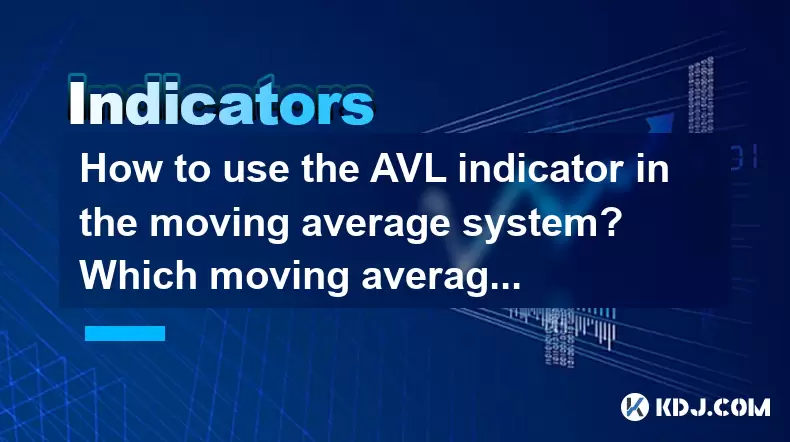
The AVL indicator, or Average Volume Level indicator, is a tool used in technical analysis to help traders understand the average trading volume over a specified period. When combined with a moving average system, it can provide valuable insights into market trends and potential entry and exit points. In this article, we will explore how to effectively use the AVL indicator within a moving average system and discuss which type of moving average might be best suited for different trading scenarios.
Understanding the AVL Indicator
The AVL indicator calculates the average volume over a chosen period, which can be set according to the trader's preference. This indicator is crucial for identifying periods of high and low trading activity, which can signal potential breakouts or reversals. By integrating the AVL with moving averages, traders can enhance their understanding of market dynamics and make more informed trading decisions.
To use the AVL indicator, you first need to set the period over which you want to calculate the average volume. Common settings include 14, 20, or 50 periods, depending on whether you are a short-term or long-term trader. Once set, the indicator will plot a line on your chart that represents the average volume over the specified period.
Integrating AVL with Moving Averages
To integrate the AVL indicator with a moving average system, you need to understand how each component works and how they can complement each other. Moving averages smooth out price data to form a single flowing line, which makes it easier to identify the direction of the trend.
Here’s how you can integrate these tools:
- Choose Your Moving Average: Decide which type of moving average you want to use. Common choices include the Simple Moving Average (SMA), Exponential Moving Average (EMA), and Weighted Moving Average (WMA).
- Set the Periods: Set the periods for both the moving average and the AVL indicator. For instance, you might use a 20-period SMA and a 20-period AVL.
- Analyze the Data: Look for points where the price crosses the moving average line and check the corresponding volume levels using the AVL indicator. High volume levels at these crossover points can indicate strong momentum and potential trading opportunities.
Using AVL and Moving Averages for Trading Signals
Combining the AVL indicator with moving averages can help generate trading signals. Here are some strategies you can employ:
- Trend Confirmation: Use the moving average to identify the trend direction. If the price is above the moving average, the trend is bullish; if below, it's bearish. Use the AVL to confirm the strength of the trend by looking for increasing volume during bullish trends and decreasing volume during bearish trends.
- Breakout Signals: Look for price breakouts accompanied by high volume as indicated by the AVL. A breakout above the moving average with high volume can signal a strong bullish move, while a breakout below with high volume can indicate a strong bearish move.
- Reversal Signals: Identify potential reversals by watching for divergences between the price and the moving average. If the price is making new highs but the volume as shown by the AVL is declining, it might signal a bearish reversal. Conversely, if the price is making new lows but the volume is increasing, it could signal a bullish reversal.
Which Moving Average is the Best?
Choosing the best moving average depends on your trading style and the market you are trading. Here’s a breakdown of the most commonly used moving averages and their characteristics:
- Simple Moving Average (SMA): The SMA gives equal weight to all prices in the period. It is straightforward and useful for identifying long-term trends. However, it can be slow to respond to recent price changes.
- Exponential Moving Average (EMA): The EMA gives more weight to recent prices, making it more responsive to new information. It is often used by short-term traders who need to react quickly to market changes.
- Weighted Moving Average (WMA): The WMA assigns weights to prices, with the most recent prices having the highest weights. It is similar to the EMA but can be more sensitive to recent price movements.
For short-term trading, the EMA is often preferred due to its responsiveness to recent price changes. For long-term trading, the SMA might be more suitable as it provides a smoother representation of the trend. The WMA can be used by traders who want a balance between the responsiveness of the EMA and the stability of the SMA.
Practical Example of Using AVL and Moving Averages
Let’s walk through a practical example of how to use the AVL indicator with a moving average system:
- Choose Your Chart: Open your trading platform and select the chart for the cryptocurrency you want to analyze.
- Add the Moving Average: Add a 20-period EMA to your chart. This will help you identify the short-term trend.
- Add the AVL Indicator: Add a 20-period AVL to your chart. This will show you the average volume over the last 20 periods.
- Analyze the Trend: Look for the price to cross above or below the EMA. If the price crosses above the EMA, it’s a potential bullish signal; if it crosses below, it’s a potential bearish signal.
- Check the Volume: Use the AVL to check the volume at the crossover points. If the volume is high when the price crosses above the EMA, it confirms the bullish signal. If the volume is high when the price crosses below the EMA, it confirms the bearish signal.
- Execute Your Trade: Based on the confirmed signals, you can enter a long position if the signal is bullish or a short position if the signal is bearish.
Adjusting the AVL and Moving Average Settings
The effectiveness of the AVL indicator and moving averages can vary depending on the settings you choose. Here are some tips for adjusting these settings:
- Short-Term Trading: Use shorter periods for both the moving average and the AVL, such as 10 or 14 periods. This will make the indicators more responsive to recent price and volume changes.
- Long-Term Trading: Use longer periods, such as 50 or 200 periods, to get a smoother and more stable representation of the trend and volume.
- Experiment and Test: Different cryptocurrencies and market conditions may require different settings. Experiment with various combinations of periods and types of moving averages to find what works best for you. Backtest your strategies to see how they would have performed in the past.
Frequently Asked Questions
Q: Can the AVL indicator be used alone without moving averages?A: While the AVL indicator can provide valuable information about volume trends, it is most effective when used in conjunction with other technical indicators like moving averages. Using the AVL alone might give you insights into volume levels but won’t provide a complete picture of price trends and potential trading opportunities.
Q: How often should I adjust the settings of the AVL and moving averages?A: The frequency of adjusting the settings depends on your trading strategy and the market conditions. For active traders, it might be necessary to adjust settings more frequently to stay aligned with short-term market movements. For longer-term traders, adjustments might be less frequent, but it’s still important to periodically review and adjust settings to ensure they remain effective.
Q: Are there any other indicators that can be used with the AVL and moving averages to enhance trading strategies?A: Yes, several other indicators can complement the AVL indicator and moving averages. The Relative Strength Index (RSI) can help identify overbought and oversold conditions, while the MACD (Moving Average Convergence Divergence) can provide additional trend confirmation and potential reversal signals. Combining these indicators can create a more robust trading strategy.
Q: Is the AVL indicator available on all trading platforms?A: The availability of the AVL indicator can vary depending on the trading platform. Major platforms like MetaTrader 4 and 5 often include the AVL indicator or allow you to download it from their marketplaces. If your platform does not have it built-in, you might need to look for third-party solutions or custom indicators.
Disclaimer:info@kdj.com
The information provided is not trading advice. kdj.com does not assume any responsibility for any investments made based on the information provided in this article. Cryptocurrencies are highly volatile and it is highly recommended that you invest with caution after thorough research!
If you believe that the content used on this website infringes your copyright, please contact us immediately (info@kdj.com) and we will delete it promptly.
- SWIFT, Consensys, and Blockchain Settlement: A New Era for Global Finance?
- 2025-09-30 06:25:13
- Gold Dollar Coin, Mystery, Upright 5: Unearthing Hidden History and Whale-Sized Speculation
- 2025-09-30 06:25:13
- Meme Coins, Smart Money, 2025 Riches: Navigating the Hype
- 2025-09-30 06:30:01
- VeChain (VET) Price Prediction 2026: Bullish Breakout or Enterprise Stalemate?
- 2025-09-30 06:30:01
- BetFi Coin: Is This the Next High-ROI Crypto Presale?
- 2025-09-30 06:30:01
- Bitcoin, Nvidia, and the Potential Upside: Lessons from the AI Boom
- 2025-09-30 06:30:15
Related knowledge
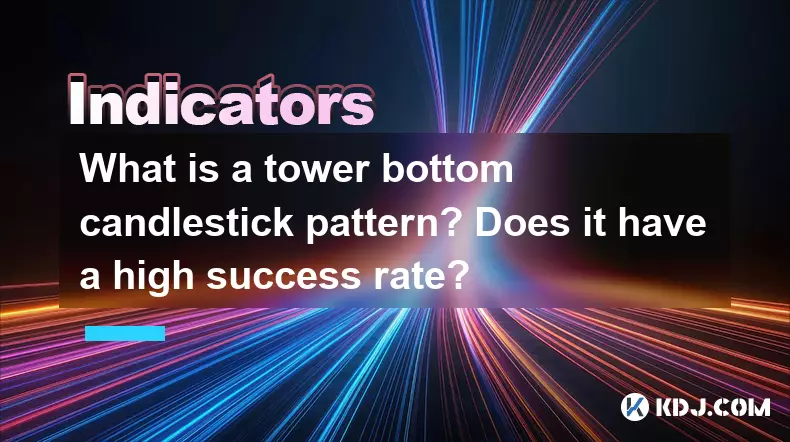
What is a tower bottom candlestick pattern? Does it have a high success rate?
Sep 22,2025 at 07:18am
Tower Bottom Candlestick Pattern Explained1. The tower bottom candlestick pattern is a reversal formation that typically appears at the end of a downt...
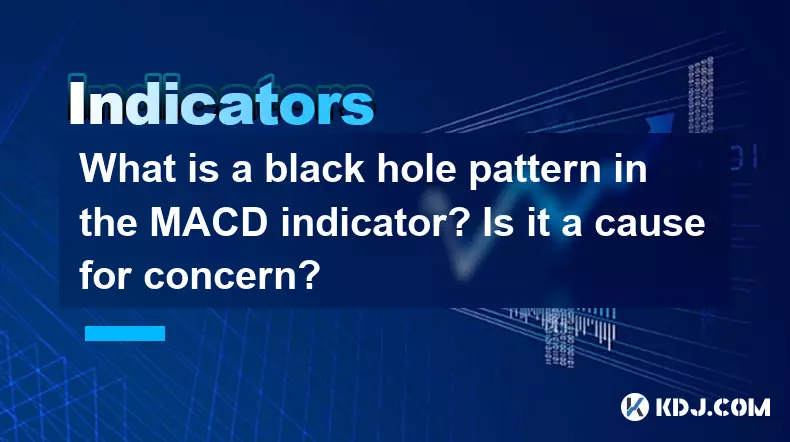
What is a black hole pattern in the MACD indicator? Is it a cause for concern?
Sep 21,2025 at 06:54pm
Bitcoin's Role in Decentralized Finance1. Bitcoin remains the cornerstone of decentralized finance, serving as a benchmark for value and security acro...

How can I use the psychological line (PSY) to determine market sentiment?
Sep 17,2025 at 02:19pm
Understanding the Psychological Line (PSY) in Cryptocurrency TradingThe Psychological Line, commonly referred to as PSY, is a momentum oscillator used...
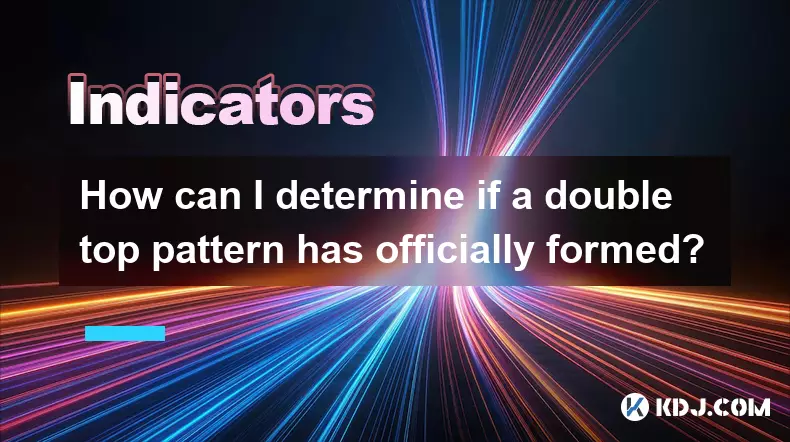
How can I determine if a double top pattern has officially formed?
Sep 21,2025 at 03:18am
Understanding the Structure of a Double Top Pattern1. A double top pattern consists of two distinct peaks that reach approximately the same price leve...
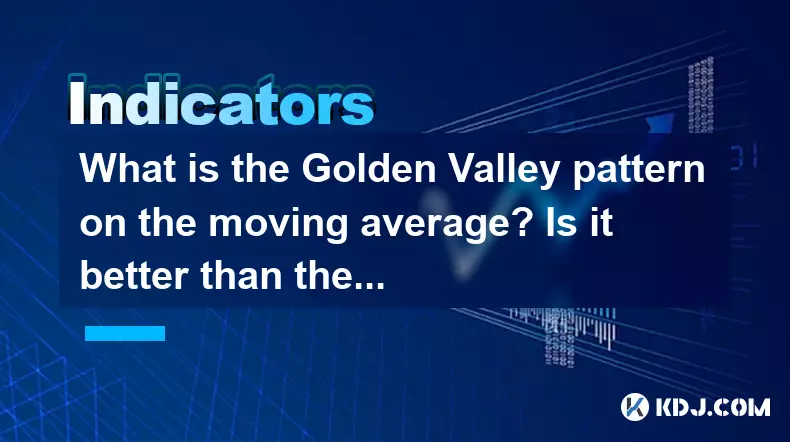
What is the Golden Valley pattern on the moving average? Is it better than the Silver Valley pattern?
Sep 21,2025 at 02:54pm
Understanding the Golden Valley Pattern in Moving Averages1. The Golden Valley pattern is a technical formation observed in cryptocurrency price chart...

What does a death cross of the RSI in the strong zone (above 50) mean?
Sep 17,2025 at 10:54pm
Understanding the Death Cross in RSI Context1. The term 'death cross' is traditionally associated with moving averages, where a short-term average cro...

What is a tower bottom candlestick pattern? Does it have a high success rate?
Sep 22,2025 at 07:18am
Tower Bottom Candlestick Pattern Explained1. The tower bottom candlestick pattern is a reversal formation that typically appears at the end of a downt...

What is a black hole pattern in the MACD indicator? Is it a cause for concern?
Sep 21,2025 at 06:54pm
Bitcoin's Role in Decentralized Finance1. Bitcoin remains the cornerstone of decentralized finance, serving as a benchmark for value and security acro...

How can I use the psychological line (PSY) to determine market sentiment?
Sep 17,2025 at 02:19pm
Understanding the Psychological Line (PSY) in Cryptocurrency TradingThe Psychological Line, commonly referred to as PSY, is a momentum oscillator used...

How can I determine if a double top pattern has officially formed?
Sep 21,2025 at 03:18am
Understanding the Structure of a Double Top Pattern1. A double top pattern consists of two distinct peaks that reach approximately the same price leve...

What is the Golden Valley pattern on the moving average? Is it better than the Silver Valley pattern?
Sep 21,2025 at 02:54pm
Understanding the Golden Valley Pattern in Moving Averages1. The Golden Valley pattern is a technical formation observed in cryptocurrency price chart...

What does a death cross of the RSI in the strong zone (above 50) mean?
Sep 17,2025 at 10:54pm
Understanding the Death Cross in RSI Context1. The term 'death cross' is traditionally associated with moving averages, where a short-term average cro...
See all articles


























![[Pycoin] PI Coin -Shocking Listance of Pycoin?! 'Rebellion' This time ... Pay attention to #paikoin [Pycoin] PI Coin -Shocking Listance of Pycoin?! 'Rebellion' This time ... Pay attention to #paikoin](/uploads/2025/09/29/cryptocurrencies-news/videos/pycoin-pi-coin-shocking-listance-pycoin-rebellion-time-pay-attention-paikoin/68da82f23cec1_image_500_375.webp)















































